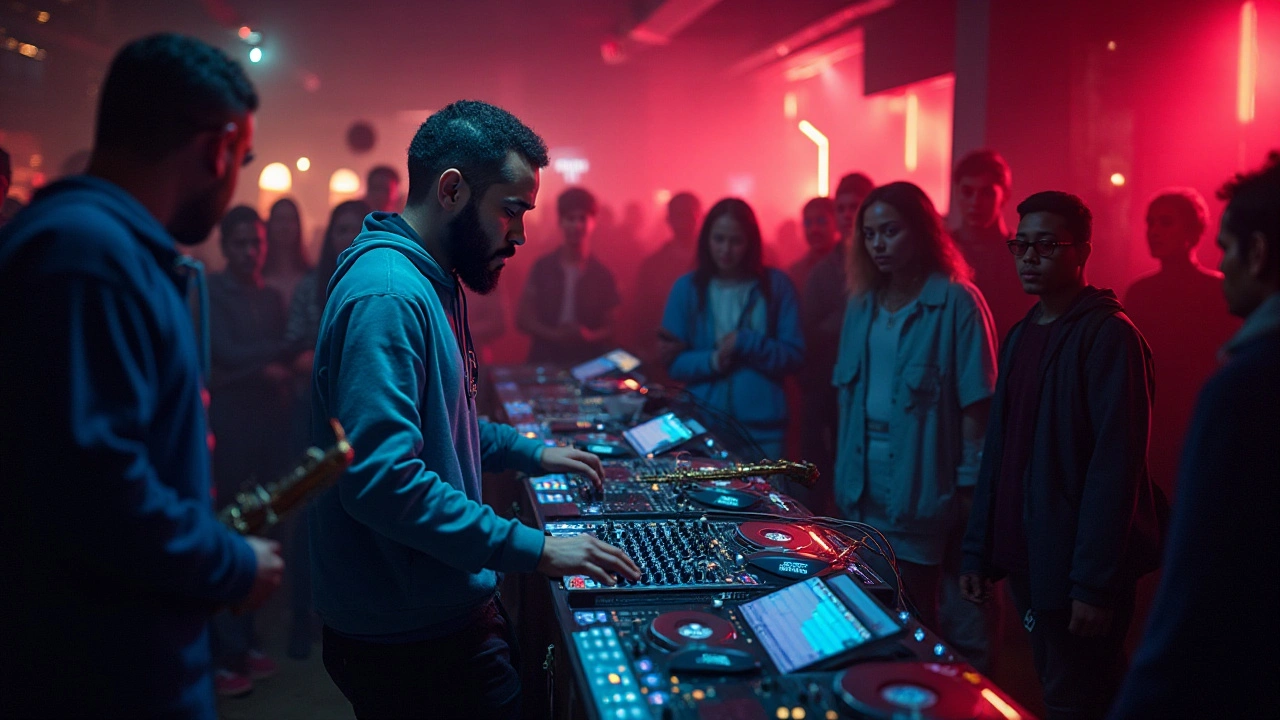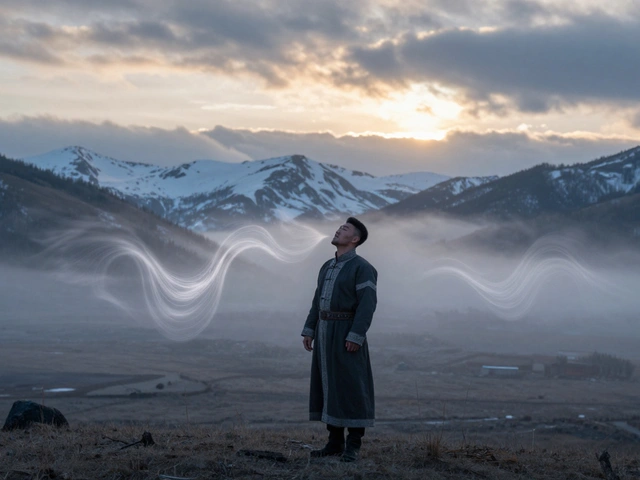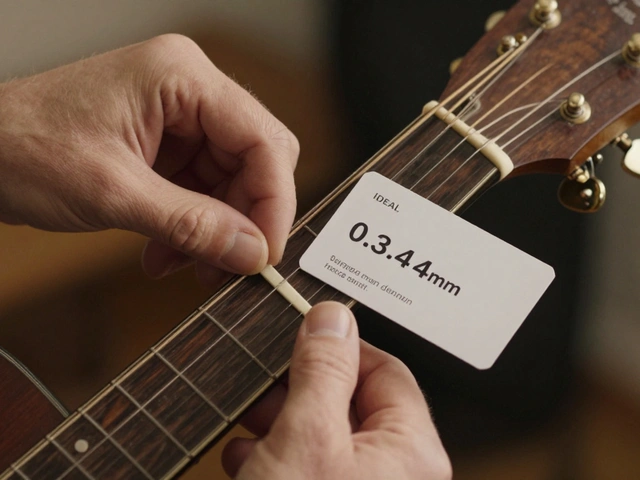Music has always served as a reflection of cultural nuances and evolving artistic landscapes. Over time, musical subgenres have emerged, giving fresh breath to classic sounds while introducing innovation and reinvention. From electronic jazz to folk-rock, these subgenres capture the spirit of time-honored traditions and pepper them with modern flair.
In this exploration, we delve deep into the world of music subgenres. How do they pay homage to the past while carving a path towards the future? Who are the vanguards redefining and reshaping these soundscapes?
Join us as we examine this frequently changing dynamic between tradition and invention—an exciting journey for music lovers who seek out novel auditory experiences without leaving the familiar beats and rhythms they cherish behind.
- Understanding Music Subgenres
- Classic Sounds in Modern Form
- The Creators Behind Genre Fusion
- Tips for Exploring Subgenres
Understanding Music Subgenres
Subgenres in music are fascinating as they represent the evolution of sound and style, showcasing the diverse and innovative spirit of musicians who strive to break free from conventional boundaries. These subgenres emerge when elements of different musical categories are fused, thus creating a completely distinctive and fresh auditory experience. This phenomenon is akin to how painters blend colors to produce new shades, rendering music not just an auditory delight but also a vibrant tapestry of culture, emotion, and time.
Just consider how music subgenres such as lo-fi hip-hop have gained traction over recent years. This subgenre delivers a nostalgic and soothing experience. Its fusion of mellow beats and warm, static undertones crafts a serene environment ideal for studying or unwinding. The humble roots of lo-fi can be traced to early 90s hip-hop and jazz beats, yet its resurgence signifies how artists today reinterpret familiar tunes in contemporary contexts.
Let's delve deeper, examining why subgenres like synthwave resonate so profoundly in the current cultural climate. Its penchant for emulating the aesthetics of 1980s music—complete with pulsating synths and electronic beats—owes much to a societal yearning for nostalgia. Media like the series 'Stranger Things' have brought the 80s back into the spotlight, influencing genres across the board.
"It's not just nostalgia, it's about finding comfort in the familiarity of the past while we forge ahead into uncertain futures," noted music historian Sarah Jacobs.This trend is precisely why synthwave continues to captivate audiences who long for nostalgia intertwined with modern allure.
Understanding these genres aids in appreciating the artistry and thought processes shaping today's musical landscape. Musicians weaving their tales across classic sounds and fresh beats exemplify creative expression's boundless potential. By grasping this, listeners find themselves open to an expansive universe of sound, whether they gravitate to the punk undercurrents of emo revival or savor the pop-infusions of electro swing. For music enthusiasts diving into subgenres, it serves as a reminder that boundaries in music are not lines, but starting points ready to be crossed.
The brilliance of subgenres is further demonstrated through their capacity to tell stories that resonate on personal and societal levels. For example, folk metal creatively binds cultural folklore with powerful metal riffs. This subgenre not only displays storytelling through music but also encourages listeners to look more deeply into history, myth, and legend. By focusing on these stories, artists like Wardruna and Eluveitie achieve two things: celebrating their heritage and rediscovering cultural narratives shaped by creative expression.
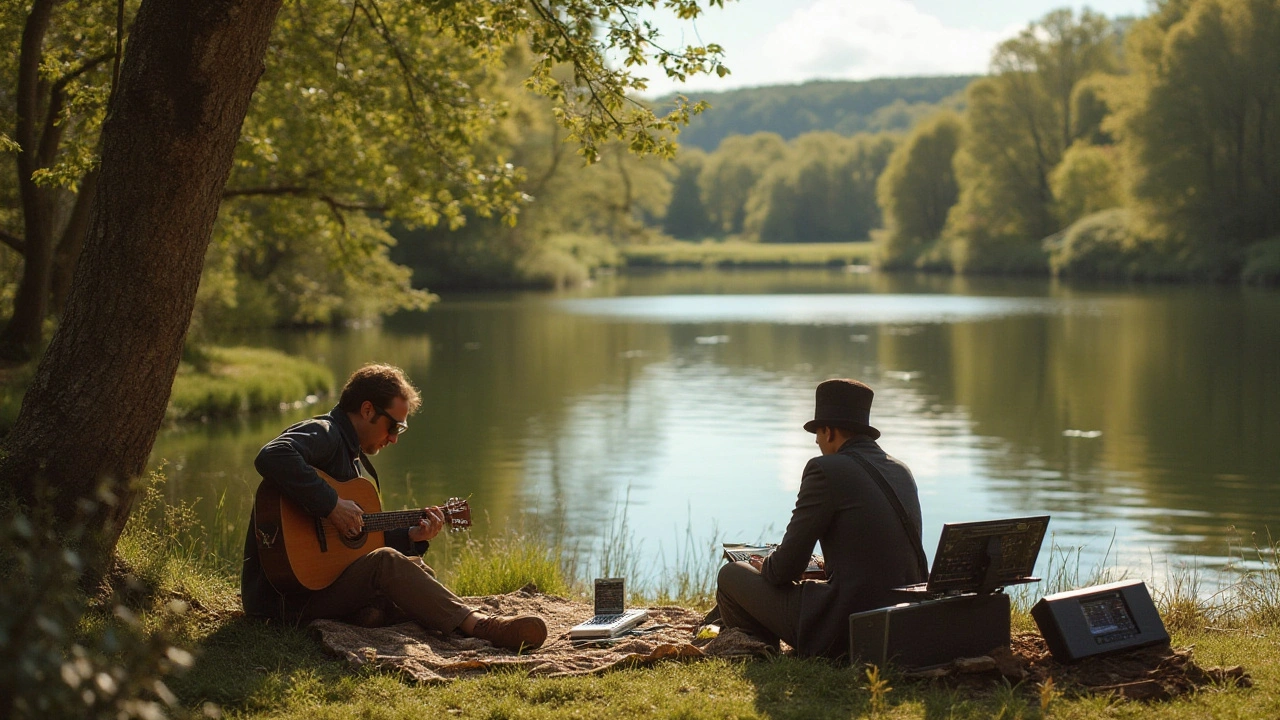
Classic Sounds in Modern Form
Talking about how classic sounds adapt to the present day is a bit like charting a novel journey that treads on both nostalgia and innovation. The revival of classic sounds often starts with a deep admiration for the old while spurred by a desire to experiment and be inventive. These musical subgenres thrive in blending the warmth of vintage tones with present-day trends, creating a sonic experience that holds firm for both seasoned enthusiasts and eager newcomers.
The resurgence of vinyl records is one of the fascinating examples. Vinyl, once thought obsolete, now endures as a beloved medium, cherished for its warm, rich sound. Couples this with modern techniques, like digital mixing or intricate sampling, and you get a sound that feels genuinely timeless. Classic sounds have thus reemerged not just as echoes of the past but as staples of today's regulated melodies.
In electronic swing, for instance, we see artists fusing the jubilant rhythms of swing music from the Roaring Twenties with dynamic EDM beats. This fusion offers a vibrant homage to an era when music was all about getting people on their feet and onto the dance floor. A flagship name in this crossover genre is Parov Stelar, revered for his pioneering spirit. His tunes are a testament to how enduring these sounds are, pointing at music's ability to transcend time while remaining adaptable.
The legendary Quincy Jones once said, "Music is the universal language... it brings people together." These words resonate deeply in how artists today blend classic sounds with contemporary styles.
Not to forget, the progressive rock revival brings vintage analog synthesizers and intricate compositions together, reminiscent of bands like Pink Floyd and Yes, yet distinguishes itself by utilizing today's digital recording capabilities. It's this sort of experimentation that helps redefine what classic really means, challenging the boundaries and inspiring a whole generation to appreciate the grand tapestry of sound.
What makes this journey all the more fascinating is the whirl of innovations alongside the tools that modern musicians use. By combining both analogue and digital landscapes, their creative toolkit expands, and with it, the potential to forge era-spanning beats. Such is the power of technology—where a nod to the past is just as celebrated as the forward-looking beats.
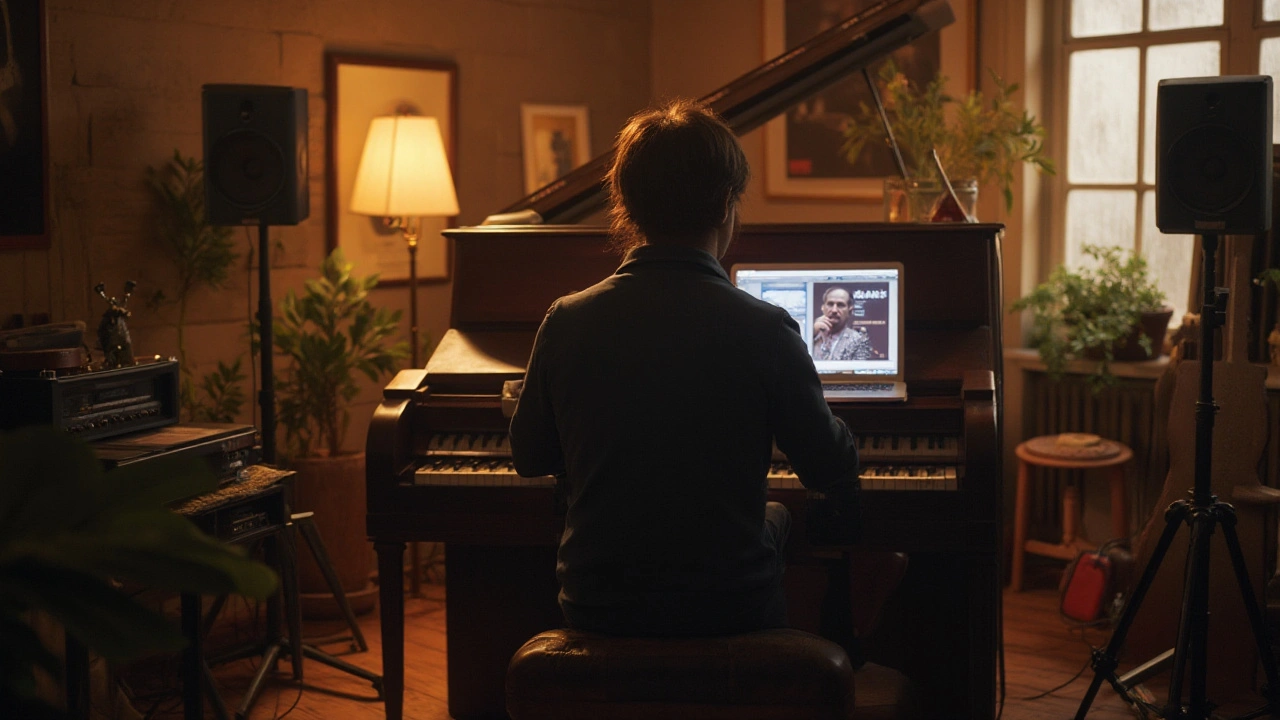
The Creators Behind Genre Fusion
Behind every groundbreaking subgenre, there lies a passionate creator or group of artists who dare to blend the unblendable. These innovators see musical boundaries not as limits, but as veils to be pierced through with imagination. As they explore these sonic landscapes, they bring to life genres where classical and contemporary sounds dance a brilliant duet. Take genre fusion artists like Flying Lotus, who masterfully combines electronic, jazz, and hip-hop influences. His work defies classification, creating an entirely new realm of sound that invites listeners into a multi-dimensional auditory experience.
Diving deeper into music subgenres, we find Areni Agbabian, who weaves Armenian folk music with serene soundscapes and modern jazz. These creators often draw inspiration from their unique cultural backgrounds or personal histories, forging a path that is both distinct and evocative. As they continue to push the envelope, they offer fans fresh perspectives and an intimate connection to distant worlds. The works of Bon Iver also exemplify the spirit of genre fusion, touching on folk, indie rock, and soulful electronic moods, and it is this very ability to transcend categories that stands as a hallmark of today’s boundary-pushing musicians.
The contributions of these genre maestros can hardly be overstated. They serve as cultural bridges that connect seemingly disparate traditions, breathing life into long-held musical practices while infusing them with contemporary zest. “Music is about expression and connection,” said Radiohead’s frontman Thom Yorke.
“It becomes really interesting when you mash different things together to create something unfamiliar yet comforting.”Their experiments redefine traditional listening experiences, expanding our auditory palettes. Through their unique brand of storytelling, listeners are escorted on a journey that blends familiarity and novelty, coaxing out a visceral response that goes deeper than sound itself.
As these creators continue to innovate, they inspire others to do the same. Emerging artists often cite pioneers like Björk or David Bowie as sources of inspiration—a testament to the enduring impact of musical mavericks who thrive on exploration. These influential names have set the stage for a cultural renaissance, one where the fusion of genres is seen not only as an opportunity for innovation but as an artistic necessity. In recent years, popular streaming platforms have tracked increased user engagement with playlists dedicated solely to fusion genres, as reflected in a recent report depicting a 60% growth in genre-bending playlists over the past five years. This shift signifies a growing audience keen on discovering music that bridges multiple worlds.
| Year | Increase in Fusion Playlists |
|---|---|
| 2019 | 20% |
| 2022 | 45% |
| 2024 | 60% |
Clearly, we are witnessing a seminal moment in music, driven by artists who find beauty in blending the old and the new. As fans, we are invited to embrace this artistic evolution, to celebrate the fusion of genres as it unfolds. We become participants in a living, breathing conversation between the past and the present—a melody that promises to echo far into the future.

Tips for Exploring Subgenres
Embarking on a journey through music subgenres can be an enlightening exploration, especially for those eager to expand their auditory palette. Understanding these nuanced variations in music requires a bit of curiosity and a willingness to dive deep beyond surface-level listening. One of the most effective ways to start is by leveraging online music streaming platforms that offer curated playlists dedicated to niche subgenres. Using these platforms, you can experiment by listening to different tracks and understanding how they distinguish themselves from the primary genre they stem from. Voice assistants like Alexa or Google Assistant can also be instructed to play artists within specific subgenres, inviting new sonic experiences with just a voice command.
Knowledge is power, and diving into music subgenres is greatly enhanced by a background insight into the genre's historical context. Many overlooked subgenres have fascinating backstories driven by socio-cultural events, technological advances, or artistic movements. Take the example of 'trip-hop,' a subgenre that emerged from the streets of Bristol in the early 1990s. It infuses elements of hip-hop, electronica, and jazz to create a moody, atmospheric sound. Reading interviews or features on pioneering artists within the subgenre amplifies your listening perspective, helping you appreciate the layers within each beat and melody. As cultural analyst Simon Reynolds noted, "The magic lies not just in the sound but in understanding the world it came from."
When exploring the realm of music subgenres, it's essential to keep an open mind. Not every new sound will resonate immediately, but patience is key. Attend live performances or virtual concerts, if possible, to experience these styles in a raw and authentic setting. Artists often perform exclusive versions of their tracks, providing a fresh take on familiar tunes that might change your perception. Local record stores, often stocked with a treasure trove of obscure genres, can be a gold mine for physical copies of niche music. Browsing through their vinyl collections, cassette tapes, or even CD racks can lead to unexpected discoveries. Engage with the local music community or online forums dedicated to specific subgenres. Enthusiasts will often share valuable insights, recommendations, and rare finds that can become an integral part of your musical journey.
Engaging with Genre Pioneers
Connecting with pioneering artists within subgenres can be incredibly rewarding. Interviews, documentaries, and biographies provide a deep dive into their creative processes, aspirations, and struggles within the music landscape. Platforms like YouTube offer a rich archive of music videos, live performances, and artist interviews. Watching these can provide context to the music, making the listening experience more immersive and fulfilling. Some musicians also share playlists of their inspirations or favorite tracks. Following their recommendations might lead you to discover associated subgenres or lesser-known tracks from influential artists. Attending workshops or Q&A sessions via music festivals can provide firsthand interactions with artists seasoned in these experimental sounds.Finally, creating your subgenre-centric playlist can solidify your discoveries. This is where your understanding of the subtle nuances within subgenres manifests. While building this playlist, consider layering tracks that demonstrate a breadth of style while retaining the theme's soul. Share this playlist with friends or fellow enthusiasts, sparking conversations that might reveal new interpretations of songs you thought you knew well. The depth in the world of music subgenres is limitless—each track tells a story that could soon become part of your own musical narrative.

